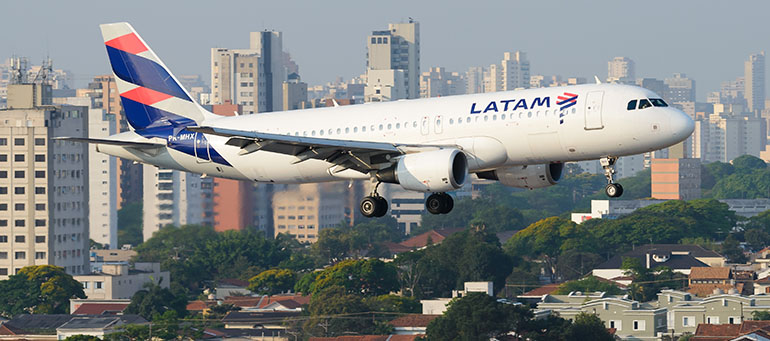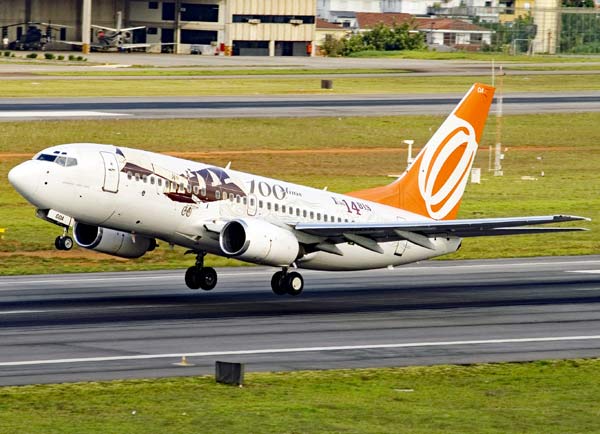
Not for the faint of heart – the unique challenges of running an airline in Brazil
By Mike Malik, Chief marketing officer at Cirium
For airlines, there’s a lot to like about Brazil. The country, after all, is home to more than 200m people. The skies above Brazil, however, are not for the faint of heart.
As carriers like Azul, LATAM, and Gol know all too well, foreign exchange volatility can be a big headache. In 2018, roughly 3.7 Brazilian reais bought you one US dollar. Today, it takes more than 5 reais to buy one US dollar. That means airlines in Brazil need to earn a lot more reais to cover their dollar costs.
Those costs typically include aircraft lease payments, aircraft maintenance, aircraft insurance, jet fuel, and the repayment of dollar-denominated bonds sold to investors.
Azul, at an investor day event in December, called the recent real depreciation a “huge challenge.” Gol said that in 2021, “96.5% of our passenger revenue and other revenue were denominated in reais while 46.7% of our total operating costs and expenses were either denominated in or linked to US dollars.”

Currency depreciation is hardly the only reason why Brazilian airlines often pay more for their fuel than carriers elsewhere. Another reason is heavy taxation. IATA once called Brazil “one of the most expensive places in the world for fuel,” due to jet fuel taxes that can reach as high as 25% in some local jurisdictions. In addition, just one company—the state-owned oil giant Petrobras—provides nearly all the fuel used by Brazilian airlines.
LATAM, with a large network of flights beyond South America, has somewhat less foreign exchange trouble because of its ability to earn revenues in dollars, euros, and other currencies overseas. For Brazilian airlines mostly reliant on narrowbody aircraft, however, international flying happens mostly within South America, involving markets like Argentina, Chile, and Colombia. The problem is that cross-border travel demand on the continent is surprisingly small.

To illustrate this, consider the market between Brazil and Colombia, two of South America’s largest economies. Diio by Cirium figures for February show just six or seven flights a day in each direction, depending on the day of week. Brazil-Argentina is larger, with roughly 30 flights a day in each direction. For context, there are as many as 125 flights per day between Japan and Korea.
Bottom line: There’s just not that much short haul international market opportunities for Brazilian carriers.
Brazil is also ultra-distant from many of the world’s leading business and tourism centers, implying the need for very long haul flights which can be economically risky, especially when fuel prices are high. São Paulo, for example, is nearly 8,000 kilometers from New York, according to Diio’s Distance Report database. The Brazilian city is more than 9,000 kilometers from London, more than 12,000 kilometers from Dubai, and more than 17,000 kilometers from Beijing. That’s longer than Sydney-London!

Back in São Paulo, as well in Rio de Janeiro, airport infrastructure presents another impediment to growth. As Gol points out in its most recent annual report, “Slots at Congonhas airport in São Paulo, the most important airport for our operations and the busiest one in Brazil, are fully utilized on weekdays. The Santos Dumont airport in Rio de Janeiro, a highly utilized airport with half-hourly shuttle flights between São Paulo and Rio de Janeiro, also has certain slot restrictions.” Airport privatization efforts in Brazil present additional cost inflation risk to airlines.

More generally, the Brazilian airline market is subject to sharp swings in the economy, which is in turn subject to sharp swings in commodity prices. During the global commodity bust of 2015, the Brazilian airline industry encountered great financial difficulties. Currently, commodity prices are generally high but very unusually, this hasn’t been accompanied by currency strength. Unlike many other airlines around the world, furthermore, Brazilian carriers did not receive any major government aid to help them through the pandemic.
Challenges like these have led a sizable number of major Brazilian airlines to extinction, including Avianca Brasil just before the pandemic.
But the situation is hardly all bad. Those 200m-plus Brazilians really do constitute a giant pool of actual and potential fliers. Tourism is growing. So are cargo opportunities.
Brazil’s airlines are receiving new planes with better economics and improved range capabilities. Airline loyalty plans have increased in value. Currently, airlines report strong demand and strong revenues. Few economists would disagree that the economy has great potential.
So no, it’s not an easy market for airlines. But cheer up and look up! There really is a lot to like about the Brazilian skies.

























































